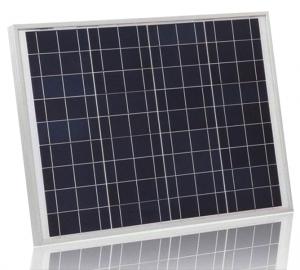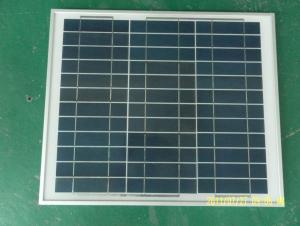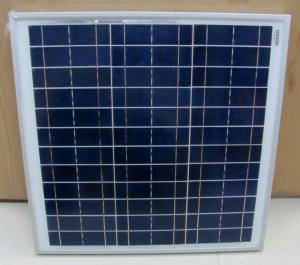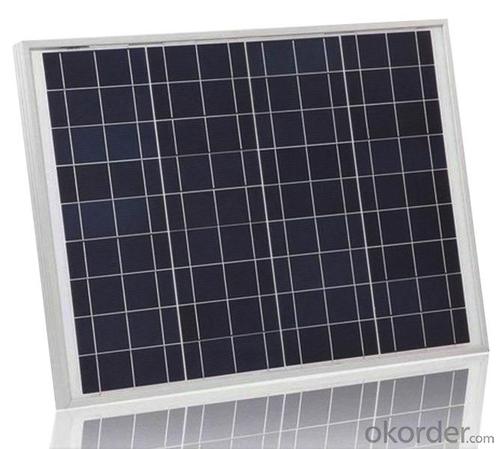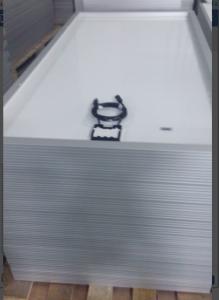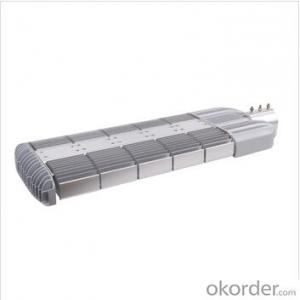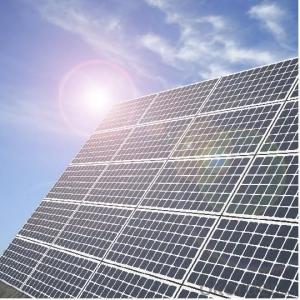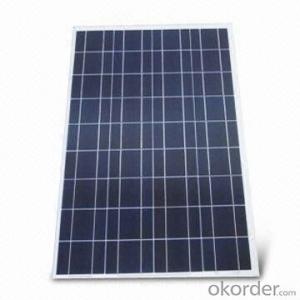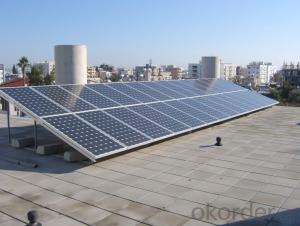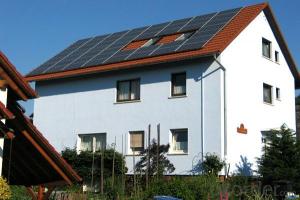400 Watt Solar Polycrystalline Panels (25w-35w)
- Loading Port:
- Shanghai
- Payment Terms:
- TT
- Min Order Qty:
- 1 watt
- Supply Capability:
- 100000/month watt/month
OKorder Service Pledge
OKorder Financial Service
You Might Also Like
Solar Polycrystalline Panels (25W-35W)
Introduction of Solar Polycrystalline Panels (25W-35W)
Solar polycrystalline panels is designed for large electrical power requirements. It is the optimal choice for both on-grid and off-grid power systems. CNBM Solar panel offers high performance of power per square foot of solar array.Poly- or multicrystalline silicon(poly-Si or mc-Si): made from cast square ingots — large blocks of molten silicon carefully cooled and solidified. Poly-Si cells are less expensive to produce than single crystal silicon cells, but are less efficient. US DOE data shows that there were a higher number of multicrystalline sales than monocrystalline silicon sales.
Characteristics of Solar Polycrystalline Panels (25W-35W)
I Solar Cell : High efficiency crystalline solar cell. Even if under the weak light, the solar module can produce maximum power output.
II Tempered glass (toughened glass): Anti-reflecting coating and high transmission rate glass increase the power output and mechanical strength of solar module.
III EVA and TPT: Using high quality EVA and TPT to prevent destroying and water.
IV AI frame: Without screw, corner connection. 6 holes on the frame can be installed easily.
V Junction box: Multi function junction box with water proof.
VI Long lifetime: ≥25 years; Less power decrease.
VII Good performance of preventing from atrocious weather such as wind and hails.
VIII Resisting moisture and etching effectively, not effected by geology. .
Standard Test Conditions of Solar Polycrystalline Panels (25W-35W)
The opto-electrical specifications shown below are stabilized values being measured at Standard Test Conditions of multicrystalline silicon Solar Panel, Irradiance: 1000W/m2, Spectrum: AM1.5 at 25°C, The info below is subject to manufacturing tolerances. Where appropriate minutes of measurement are available and are used for the dimensioning of the installation.
Advantages of Solar Polycrystalline Panels (25W-35W)
• CNBM Solar performance guarantees for 25 years
• 2 years guarantee for workmanship for multicrystalline silicon Solar Panel
• Timeliness of delivery
CNBM International Corporation's products including Monocrystalline Solar Panel, Polycrystalline Solar Panel ( multicrystalline silicon Solar Panel) have received and enjoyed famous reputation in many countries and regions in the world .As a solar panel manufacturer in China, we strive to provide our customers with excellent service, superior products and unmatched value.
Characteristics of Solar Polycrystalline Panels (25W-35W)
Max Power Voltage Vmp (V) | 18.4V | 18.4V | 18.0V |
Max Power Current Imp (A) | 1.36A | 1.63A | 1.94A |
Open Circuit Voltage Voc (V) | 23.0V | 23.0V | 22.6V |
Short Circuit Current Isc (A) | 1.46A | 1.74A | 2.08A |
Max Power Pm (W) | 25W | 30W | 35W |
Temperature Coefficient of Cells
NOCT | 47℃±2℃ |
Temperature Coefficients of Isc (%/℃) | 0.064 |
Temperature Coefficients of Voc (%/℃) | -0.33 |
Temperature Coefficients of Pmp (%/℃) | -0.45 |
The dimension of the modules can be changed according to the demand of clients
Limits
Operating Temperature | –40 °C to +85°C |
Storage Temperature | –40 °C to +85°C |
Max System Voltage | 700V |
Guarantee of Solar Polycrystalline Panels (25W-35W)
Products Guarantee | 2 yrs free from defects in materials and workmanship |
Performance Guarantee | No less than 90% within 10yrs and no less than 80% within 20yrs |
Certificates | IEC, ISO, TUV, CE |
The Equipment of Solar Polycrystalline Panels (25W-35W)
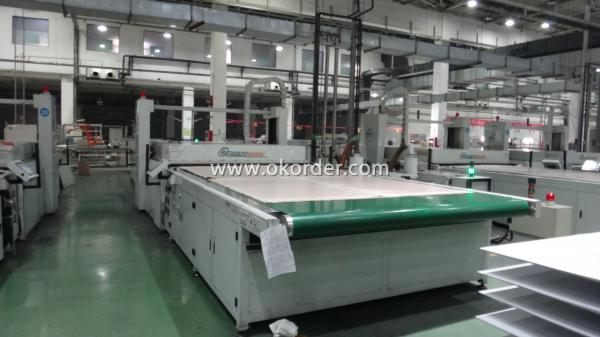
The usage of Solar Polycrystalline Panels
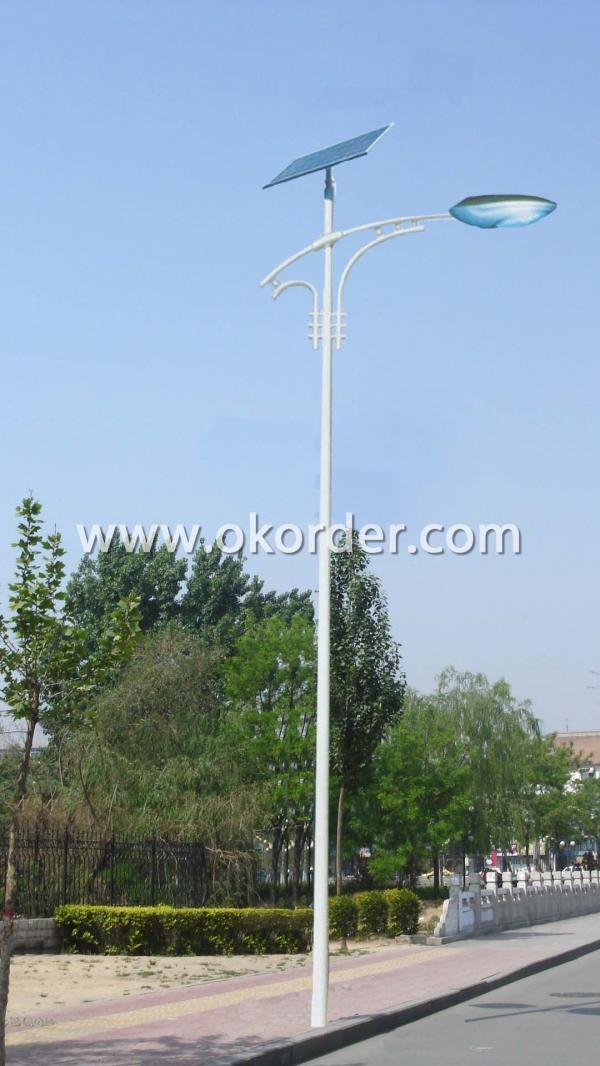
- Q: this solar panel i saw was for 500 dollars(i get a 25% discount)and i was curious will they produce electricity? or just heat?what do they do?is it a good investment?here is a link to the one i would like, no reviews but it looks new to the site.
- You need a plan as to what you are going to with 80 watts of power. 80w at the best, it will usually be less. One problem I have is the limited specs, you don't even know the voltage. And you get a Sharp Module but nothing else is mentioned about it. I wouldn't buy it unless you can get full specs on it and on the Sharp Module. With no specs, it's difficult to get a refund if it is defective. If you are going to store it and use it for an AC appliance, a small one, you will need: a charge controller (to control the charge into the battery) a lead acid battery (to store energy for when the sun is out) an inverter (to convert 2 volts DC into 20 VAC) and all of these cost. .
- Q: I heard the wind turbines, solar panels so far provide America with around 2% of our energy. So since liberals appear to want to replace natural energy with man made products, that cause massive pollution by the way to make- How long will that take 30 years, 00 years? How many Wind Turbines will Airplanes and birds and parachute jumpers smash into, isn't that a problem? How do we rid of natural energy before we have the LIBERAL BACK UP PLAN - WE DON'T REALLY HAVE ? How do they think this is gonna work? Its not logical, we need to come up with more ideas! That Battery idea kinda sucks since Batteries Need natural energy to work.
- Green technology at this stage is not viable for the long run...we don't have the technology as of yet to replace all other modes of energy...Windmill Farms are EXTREMELY ugly and kills thousands of birds and only work when the wind is actually blowing...solar is not ready for prime time, too expensive for the average joe...we should be pursuing other engines that would use less gasoline and some exist but nobody is promoting those because they are convinced electric cars are the way to go but those are a farce because we don't generate enough electricity now for homes to use, can you imagine how little we would have if all cars starting using that same energy? IT is a farce that during an economic crisis the current powers that be are wasting money on green technology garbage that won't work. We should be figuring out how to drill our own oil and get off foreign sources and build more plants to produce more electricity, not figure out how to use the little electricity we currently produce in all our vehicles...Liberals...what a concept.
- Q: Can solar panels be installed on farmlands or agricultural fields?
- Yes, solar panels can be installed on farmlands or agricultural fields. In fact, many farmers and landowners are increasingly using their land for solar energy production as it can provide additional income and sustainable farming practices. Solar panels can be mounted on ground-mounted systems or integrated into structures like barns or sheds without interfering with farming operations. Additionally, solar installations can offer benefits such as reduced energy costs and promoting environmental sustainability in the agriculture sector.
- Q: This is the cenario. Your yearly energy use comes by mail and it states that the total amount of energy used your household is 7000kWh.Then you make the decision of switching to get solar panels. The question is what area should your solar panel be given that the average annual length of daylight is 2.0.
- It is not that simple. There are 3 main types of solar cells. Monocrystalline silicon is the most efficient and produces the smallest solar cells, and therefore the smallest panels. Poly-crystalline (or multi-crystalline) silicon produces the next most efficient type of cells and are a popular choice. Amorphous (or thin-film) silicon uses the least amount of silicon and also produces the least efficient solar cells. This means thin film system take up more area than the other two; an important factor to consider in relation to possible future upgrades; i.e. if you'll have enough space left to do so. The North (in the Southern hemisphere) or South (in the Northern hemisphere) facing roof collects the most energy. So this biases the roof area required. Your energy usage can be changed. Hot water (a major energy user) could be better using direct solar heating with peak demand boosting, either from mains or solar. There are other possibilities, either to reduce demand or to provide energy from other sources. Not all sunshine hours are equal. Hours around midday are far more productive than hours later in the day. This must be factored in.
- Q: Can solar panels be installed on billboards?
- Yes, solar panels can be installed on billboards. In fact, many companies are utilizing this option to generate renewable energy and reduce their carbon footprint. By harnessing solar power, billboards can become self-sustaining and contribute to a greener environment.
- Q: Can you please tell me how much a solar panel costs?Please back up your info with a website.
- If okorder /.. Low-cost crystalline panel manufacturers such as Suntech are believed to have costs in the $.50/watt range today - making it $300 for a 200-watt panel. That doesn't mean that one can buy a panel for that price, of course. If you mean a DIY panel from purchased solar cells, the cost would be closer to $360 for an equivalent-powered panel, not counting the price of the frame, and the labor. A homebuilt panel would not stand up to decades of weather unless one spent even more on the frame. And since such a panel would not have safety certification, it could not legally be connected to the grid in most places. If you meant a water heating panel, please update or post another question - I'm sure people will chime in.
- Q: My project needs to build a thermal solar panel that would be used as a demonstrational rig. The dimensions i am allowed do not allow me to use a normal thermal solar panel so i have decided to use the heat exchanger from the back of a fridge. Although this is possible to use what equation would i use to prove the power of the sun would actually heat up the water. More importantly when the rig is demonstrated to students, they will need to be able to determine if the raise in temperature given by the thermometers is what should be given. Variables of the rig will include: Angle of the panel, Light intensity, Direction of panel, and more importantly the flow rate of the water travelling through the pipes. What equation includes those variables (change in temperature, flow rate) and would allow me to incorporate the angle of the panel. The light source would be a lamp so i would also need to know how much of the energy from the lamp is actually being used by the panel?
- Forget the long winded discussion above. There are so many variables that you cannot calculate the outcome. This does not mean that the experiment is a failure. It gives you information on the fact that water can be heated in this manner, and that you can vary the result by modifying the variables.
- Q: Can solar panels be used to power outdoor lighting?
- Yes, solar panels can be used to power outdoor lighting. Solar panels convert sunlight into electricity, which can be stored in batteries or used directly to power outdoor lights such as garden lights, pathway lights, or streetlights. This allows for environmentally friendly and cost-effective lighting solutions in outdoor areas.
- Q: Can solar panels withstand extreme weather conditions?
- Yes, solar panels are designed to withstand extreme weather conditions. They are built to be durable and can withstand hail, heavy rains, high winds, and even snow loads. Additionally, they are made with materials that can resist corrosion and damage from prolonged exposure to sunlight.
- Q: i am working on a project which requires small solar panels. i am looking for ones about 3X4. is there any way i could get these? and where?
- There okorder
Send your message to us
400 Watt Solar Polycrystalline Panels (25w-35w)
- Loading Port:
- Shanghai
- Payment Terms:
- TT
- Min Order Qty:
- 1 watt
- Supply Capability:
- 100000/month watt/month
OKorder Service Pledge
OKorder Financial Service
Similar products
Hot products
Hot Searches
Related keywords
